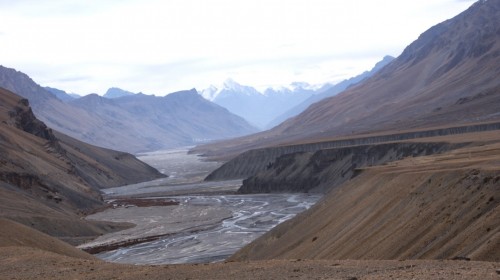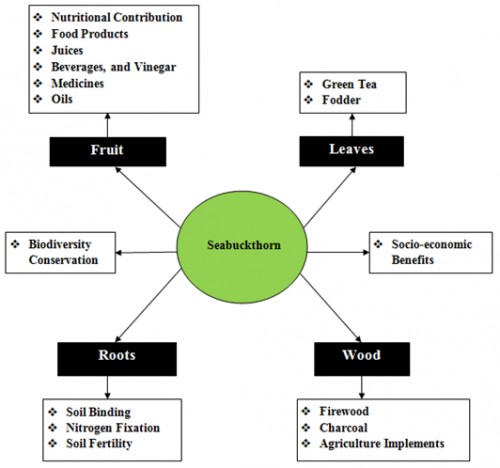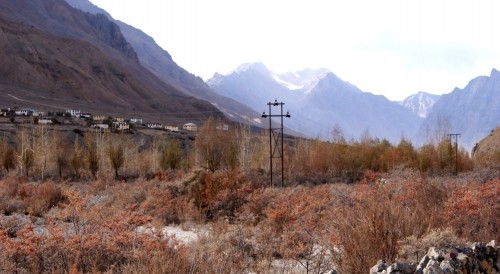Vol. 7, Issue 1 (2019)
Seabuckthorn a new approach in ecological restoration of Himalayan Ecosystem: A review
Author(s): Abhay Sharma, Virendra Singh, Abha Sharma and Narender Negi
Abstract: Seabuckthorn belongs to the family Elaeagnaceae is a multipurpose plant for soil erosion control, wildlife protection, land reclamation, soil improvement and ecological restoration which is mostly found in cold mountainous regions. The wide adaptation, fast growth, strong coppicing and suckering habits, coupled with efficient nitrogen fixation, makes seabuckthorn plantation suitable for soil and water conservation and reforestation for fragile mountain areas. As soil is a dynamic habitat for an enormous variety of life forms provides mechanical support to the plant but also provides nutrients for its growth and development which can only be achieved if the soil is healthy and fertile. It provides us various products (health food, cosmetics and medicines) and is also a popular fodder, fuel wood and soil binder in cold deserts of Himalayas. Especially, seabuckthorn plantation has an obvious role in improvement of soil organic carbon and available N which are two most important factors in improved soil fertility. It thus qualifies as a unique option for the simultaneous management of several problems emanating from the fragility, marginality, inaccessibility and diversity characterising in mountain areas. Hence for biodiversity conservation, seabuckthorn plantation in cold deserts can play a significant role in combating soil erosion, enhance soil quality and fertility, solve the threat of climate change and also will make the people of Himalayan ecosystem economically strong.

Fig. 1: Spiti Valley, Spiti

Fig. 2: Different attributes of seabuckthorn

Fig. 3: Seabuckthorn stand growing at Lingti
Pages: 1219-1226 | 494 Views 140 Downloads
download (5618KB)
How to cite this article:
Abhay Sharma, Virendra Singh, Abha Sharma, Narender Negi. Seabuckthorn a new approach in ecological restoration of Himalayan Ecosystem: A review. Int J Chem Stud 2019;7(1):1219-1226.






